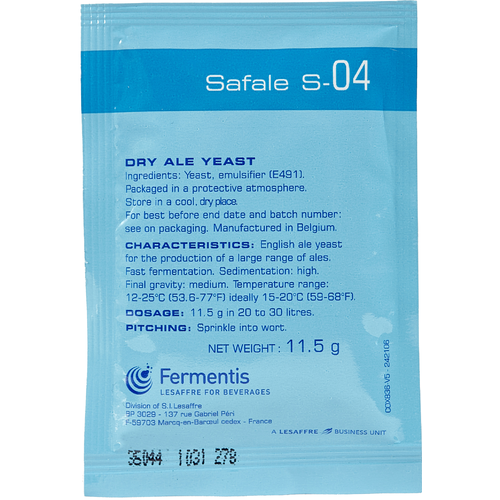A good fermentation is critical for a good beer. It’s way more important than the perfect recipe. We create the wort, but it’s the yeast that creates the beer. There are a few things we can do to create the best environment for the yeast.
- Nutrition and oxygen, especially for higher OG beers (that’s for another guide)
- Pitching and pitching rate
- And temperature control
Yeast produces other things than alcohol and co2 – esters and phenols gives fruity and spicy flavors but some other compounds like diacetyl, acetaldehyde, and fusel alcohols are not desired. DMS is not caused by yeast btw. With a good fermentation we can control these compounds.
But the most important thing is to start of with a good healthy yeast and make sure you have enough of it. A program like Brewfather is a good tool for this. With higher OG (original gravity) beers oxygen and yeast nutrition is also important. But that’s for another topic.
There 3 phases of fermentation
- Adaption or Lag phase, 6-24 hours, the yeast is getting ready by using their own glycogen reserves and lipids and oxygen from the wort to rebuild themselves and grow. An oxygen rich wort shortens the lag phase
- High growth or high kräusen, is about 1-6 days, is where the yeast starts to eat and produce alcohol by eating sugar and thereby also creating esters and phenols
- Maturation or conditioning phase can be as long as 10 days and starts when the co2 activity slows down. The rule of thumb is double the time from the high growth phase. Unless you increase the temperature. I’ll get back to that.
There are 2 (3) ways to add yeast
1. Direct pitch, which often goes well, but you need buy several packets of yeast.
a. It’s recommended to rehydrate dry yeast if the OG is higher than 1.065. Rehydrate dry yeast is better for the yeast in general, especially higher OG beers. There is a link on how to this in the description
2. Making a yeast starter. Programs like Brewfather is also great for this
Controlling the temperature
If the yeast is too cold it will go to sleep and too hot it will go berserk and create off flavors (10f or 5c above range) like fusel alcohol, banana or bubblegum esters. These flavors cannot be re-absorbed be the yeast.
A good fermentation starts with pitching the yeast at the right temperature.
Pitching at high temperature is risky because the yeast might produce more metabolites (and thereby off flavors) than it can reabsorb in the maturation phase, which effects how clean tasting the beer is in the end.
You can get a perfectly clean beer by pitching at the low temperature range of the yeast. Or just below. Ex The Chico strain, California ale, has a range of 68-73degf (20-23c), you should pitch at 65-68degf (18-20c). If you want more fruity esters and phenols, you should pitch higher within the range.
When the yeast is pitched let it rise to wanted fermentation temperature and keep it there to the end of the high growth phase. If you’re measuring the SG (specific gravity), you should now that the maturation phase tarts, when there are 2-5 SG points left. If possible, you should raise the temperature for phase. 5degC or 7degF for ales and 8-10degC or 14-18degF for lagers and keep the temperature there for 6-14 days. If you don’t raise the temperature, you should go at least 14 days. If you want to be sure, you can just double the time from the high growth phase and then the yeast has done its job cleaning up. Unless you have underpitched your yeast, but in that case it’s too late anyway. You’ll be stuck with the off flavors at that point.
I’m often asked about secondary fermentation, but I never transfer my beer to secondary. There is no evidence that this has any benefits. It doesn’t make a cleaner beer and it doesn’t make a better tasting beer. But you risk oxidation and contamination, so I don’t recommend that. There are other reason why commercial brewers do it, but we really don’t have to.
You can easily let your beer sit in the fermentation tank for 5-6 weeks. It won’t produce autolysis.
You can check out here how to make a simple fermentation chamber